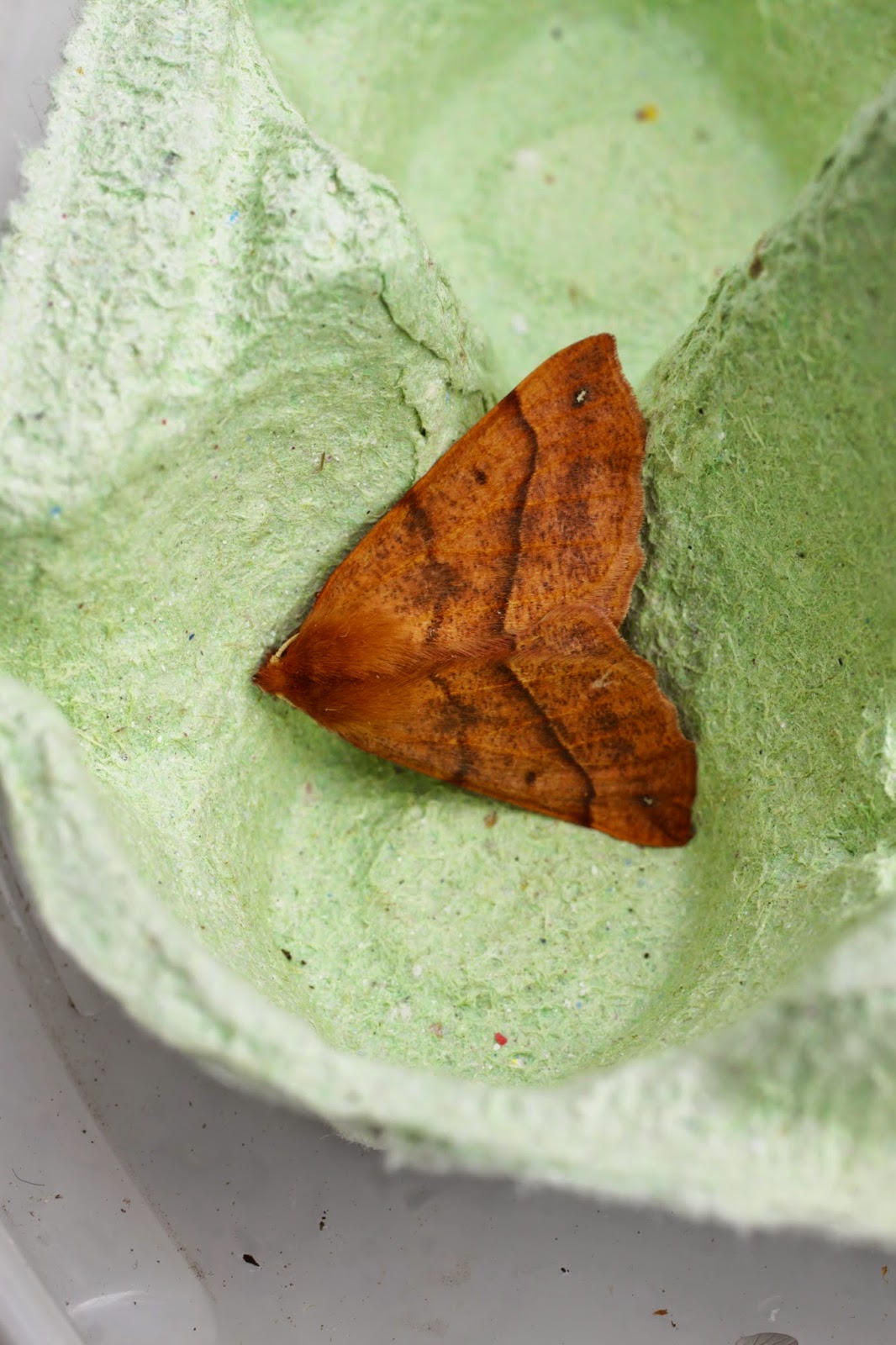 |
| Buzzard |
 |
| Aurora Forecast |
 |
| Northern Lights over Raasay |
 |
| Northern Lights over Raasay |
 |
| Northern Lights over Raasay |
Back to the more commonplace. During the period of clear dry nights I put the moth trap out a couple of times but the catches were small, (one night like a British Eurovision song entry - zero) not least because the temperature overnight was at, or near, freezing. There were a couple of Feathered Thorn and an Angle Shades.
 |
| Feathered Thorn |
 |
| Angle Shades |
I have spent a lot of time, probably too much,studying and identifying the fungi I have found on the croft. Some of the earlier identifications I have made might be incorrect and I will take a look at them again over the winter. I am reasonably confident that the examples below of recent identifications are correct to species level after using several fungi handbooks and then checking them against Fungi of the Hebrides - R W G Dennis, which comprehensively lists all the fungi recognised in the Inner and Outer Hebrides in 1986, long before the days of the NBN Gateway.
.JPG) |
| Pale Waxcap (C. berkeleyi) |
.JPG) |
| Pale Waxcap (C. berkeleyi) Spores |
.JPG) |
| Star Pinkgill (Entoloma conferendum) |
%2BSpores.jpg) |
| Star Pinkgill (Entoloma conferendum) Spores |
.JPG) |
| Waxcap (H. euroflavescens) |
%2BSpores.JPG) |
| Waxcap (H. euroflavescens) Spores |
Whenever I see an otter fishing I want to know what the fish species might be that the otter is eating but it is just about impossible to tell, so I have put a creel out by the kelp where otters regularly fish, on calm days when I can get the creel in and out using a canoe. I caught 2 cod on the first day, but then things went awry on the second day. I probably had the creel in water that was too shallow because the creel was almost literally full of crabs, 47 in total, and they took ages to pull out of the narrow necked creel. 45 were shore crabs and the other 2 were velvet swimming crabs, The next day from deeper water I had 2 velvet swimming crabs, easily the most evil looking crab, and on the last day of fishing, what I think were two juvenile Norway pout. None of these were eaten, least of all the fierce and threatening swimming crabs.
 |
| Velvet Swimming Crab |
 |
| A Creelful of Crabs |
 |
| Young Cod |
 |
| Probably a Juvenile Norway Pout |






